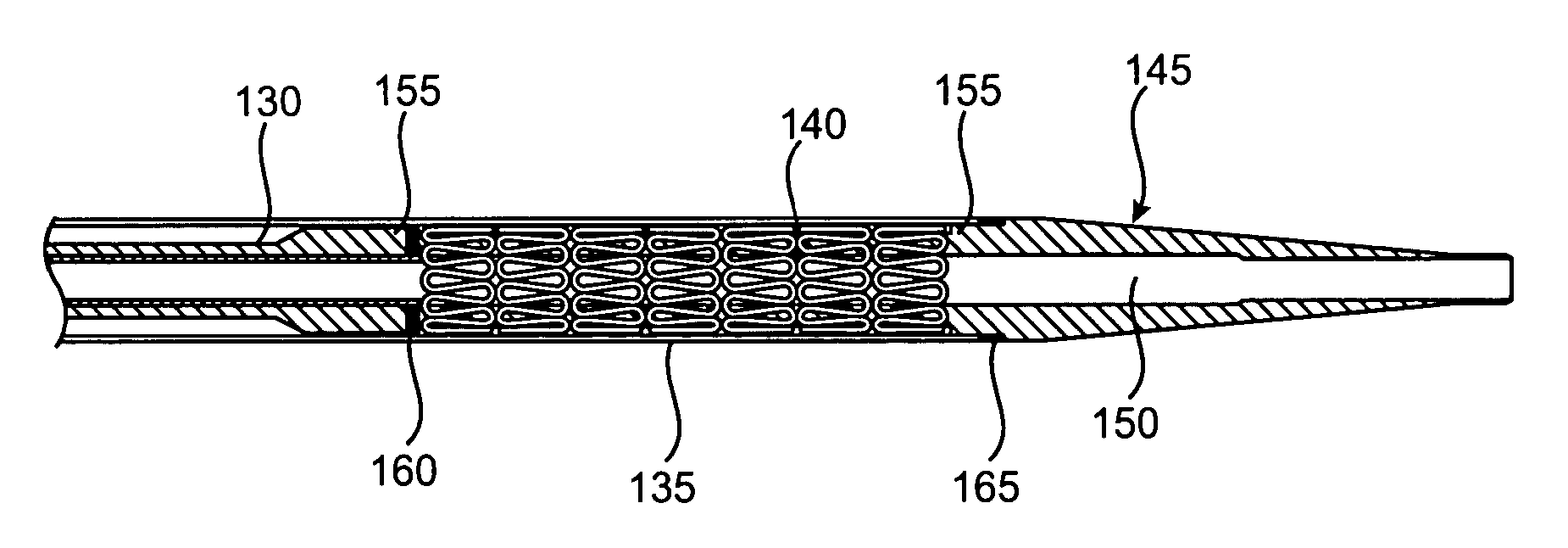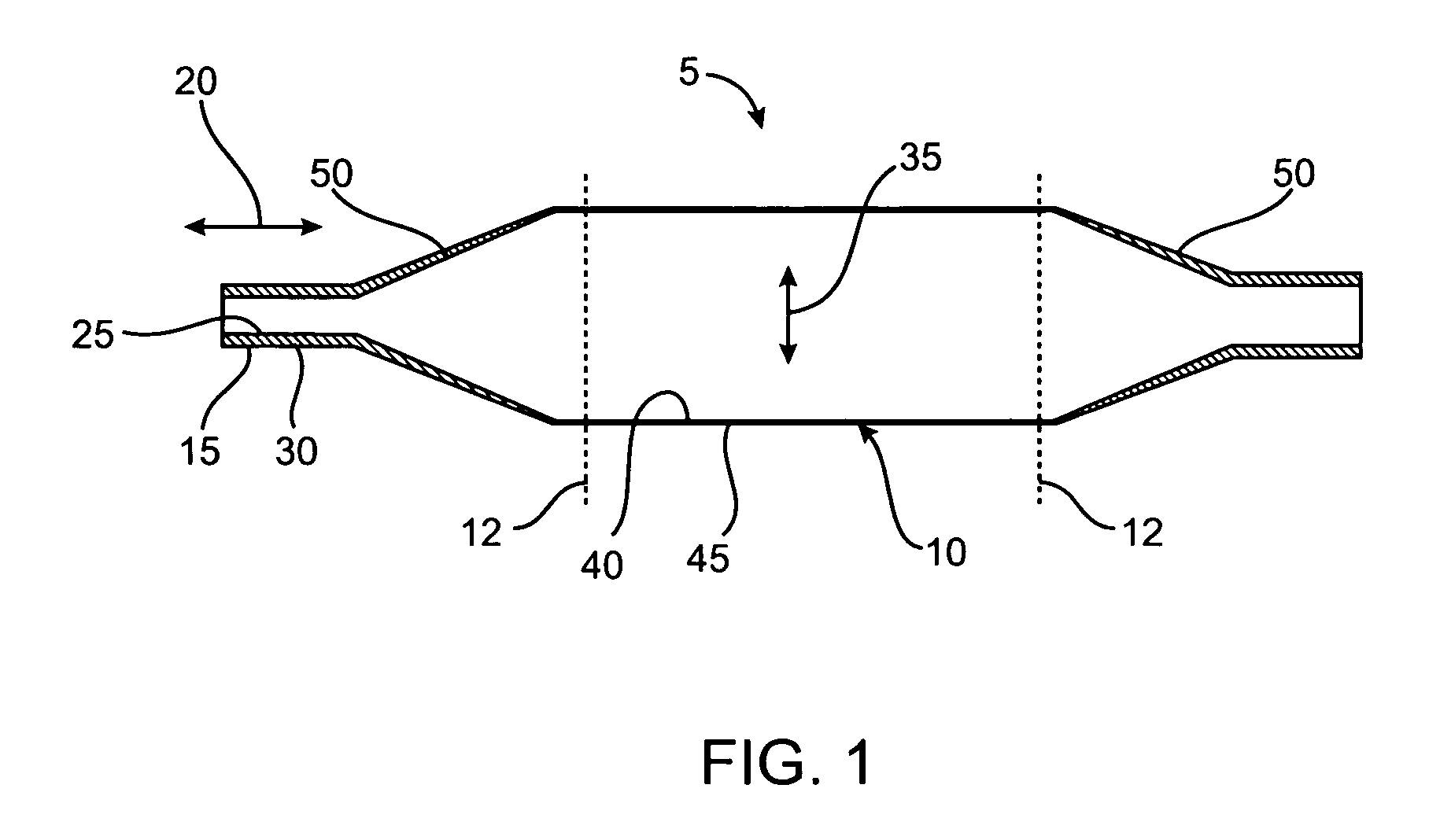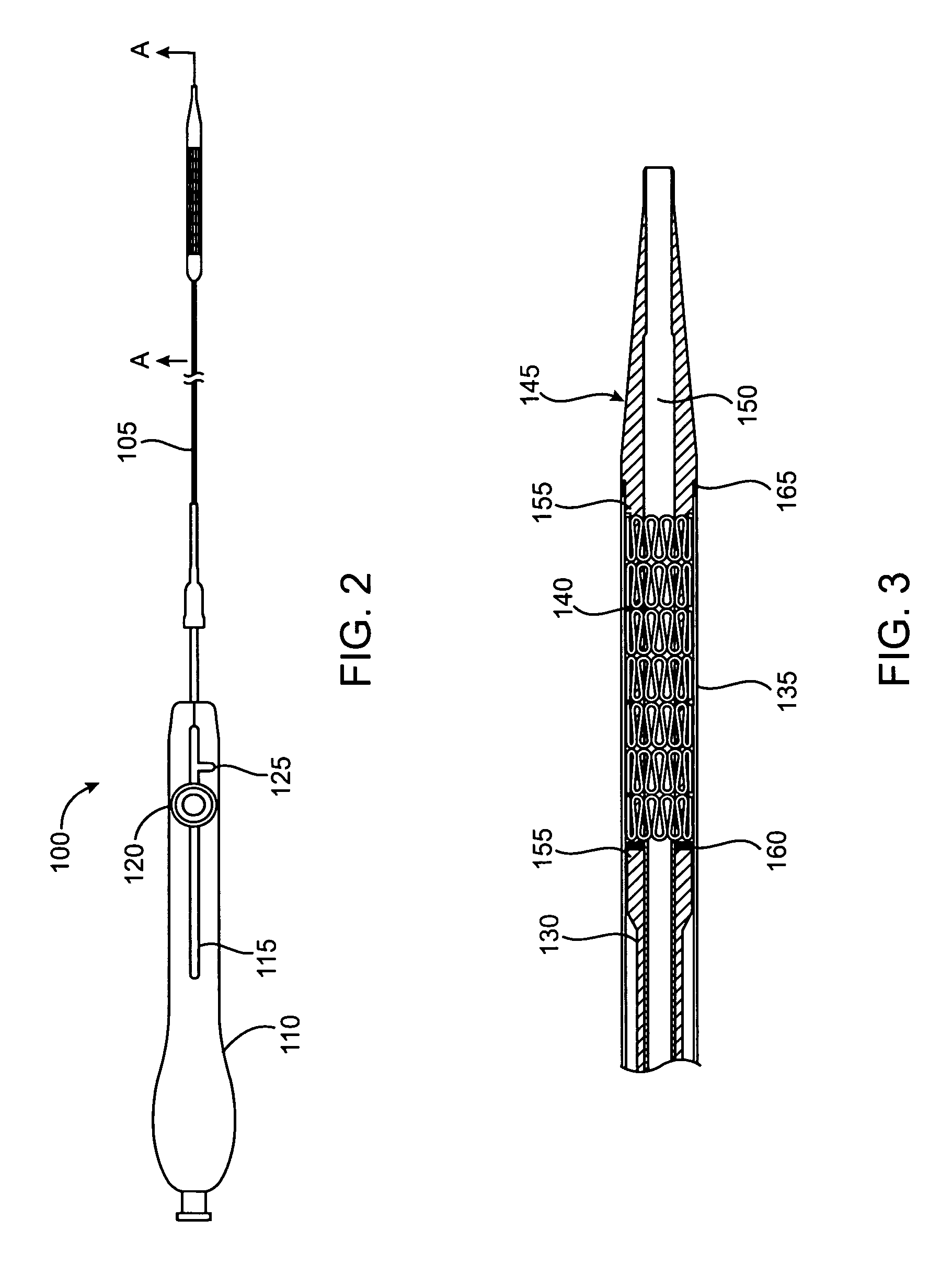Bi-axial oriented sheath
a technology of axial orientation and sheath, which is applied in the direction of prosthesis, blood vessels, catheters, etc., can solve the problems of increasing the risk of complications at the patient access site, and the inability to deliver a self-expanding prosthesis to the treatment area, and achieves the effect of thin wall
- Summary
- Abstract
- Description
- Claims
- Application Information
AI Technical Summary
Benefits of technology
Problems solved by technology
Method used
Image
Examples
Embodiment Construction
[0017] Embodiments according to the present invention will find greatest use in the percutaneous placement of a self-expanding prosthesis, such as endovascular stent-grafts and stents, for the treatment of diseases of the vasculature, particularly aneurysms, stenoses, and the like. Graft structures and stents that may be suitable are described in U.S. Pat. Nos. 5,591,195, 5,683,451, 5,824,041 and 6,533,807, the full disclosure of which is incorporated herein by reference.
[0018] The self-expanding prosthesis will be radially compressible, and a cover or sheath will maintain the self-expanding prosthesis under compression in a narrow-diameter configuration while they are being introduced to the body lumen, typically during a surgical cutdown or percutaneous introduction procedures. Placement of the self-expanding prosthesis is done by movement (usually retraction) of the sheath, releasing the self-expanding prosthesis at a target location in the vessel. Many of the self-expanding pro...
PUM
| Property | Measurement | Unit |
|---|---|---|
| diameter | aaaaa | aaaaa |
| diameter | aaaaa | aaaaa |
| diameter | aaaaa | aaaaa |
Abstract
Description
Claims
Application Information
 Login to View More
Login to View More - R&D
- Intellectual Property
- Life Sciences
- Materials
- Tech Scout
- Unparalleled Data Quality
- Higher Quality Content
- 60% Fewer Hallucinations
Browse by: Latest US Patents, China's latest patents, Technical Efficacy Thesaurus, Application Domain, Technology Topic, Popular Technical Reports.
© 2025 PatSnap. All rights reserved.Legal|Privacy policy|Modern Slavery Act Transparency Statement|Sitemap|About US| Contact US: help@patsnap.com



